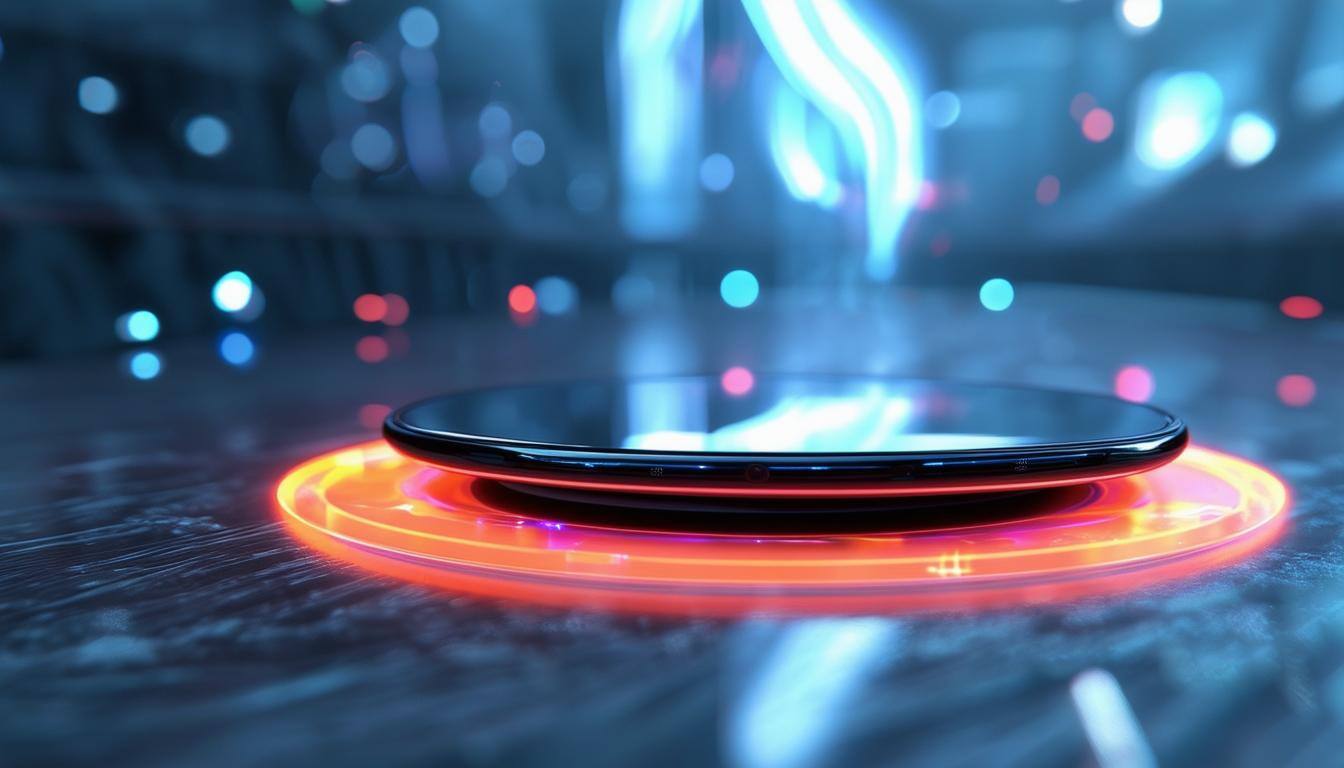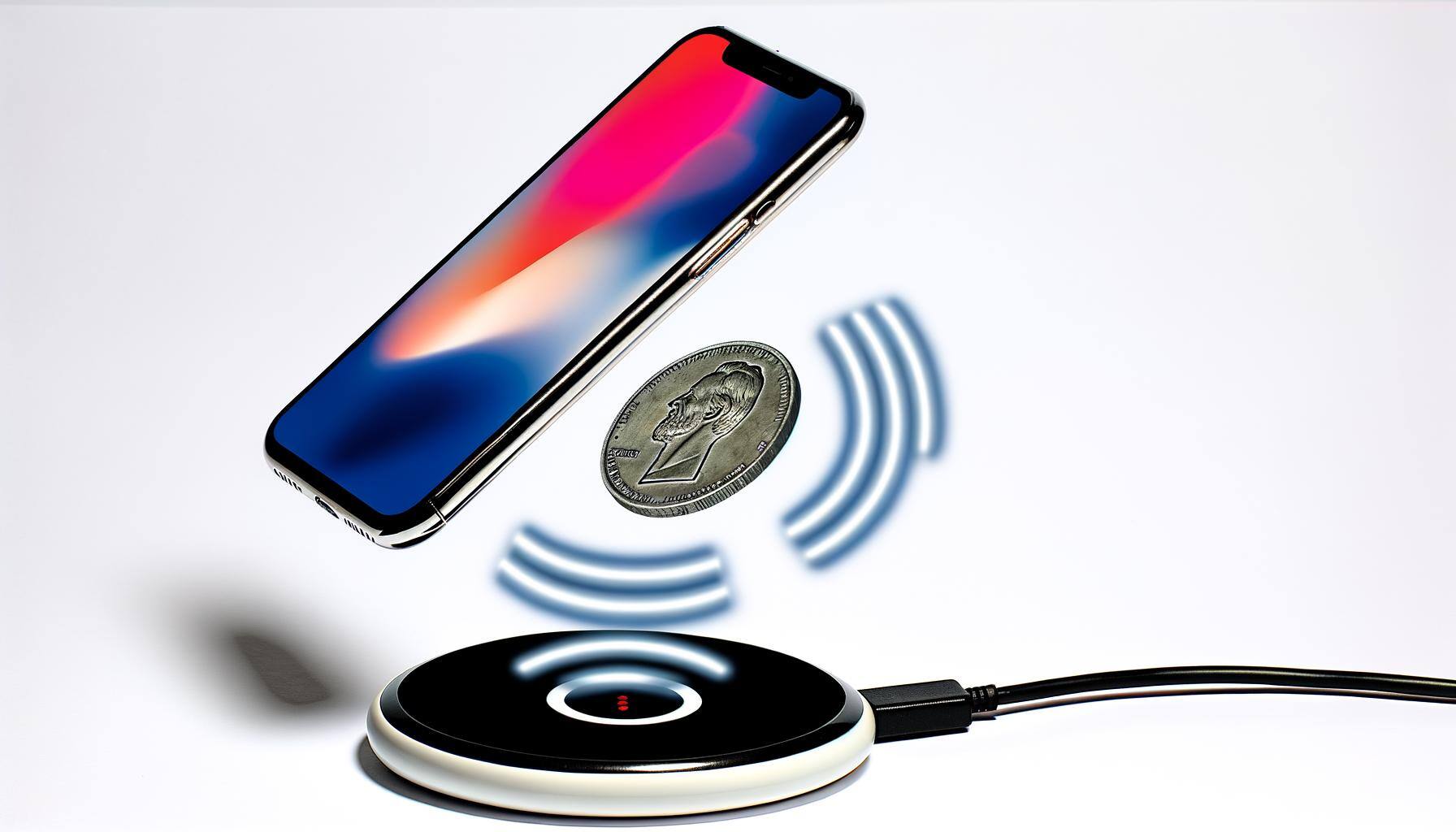Introduced in September 2024, the Wireless Power Consortium's Qi 2.1 standard was designed to tackle wireless charging's biggest challenges: misalignment, cross-device compatibility, and inefficient power transfer. As Qi technology seeks to expand beyond its repertoire of 1100+ product lines and 1.5 billion devices globally, manufacturers must now verify three critical elements: Active Alignment Power Profile, Magnetic Accessory Cover performance, and Load Quality Factor measurements to ensure consistent efficiency across different device form factors.
Active Alignment Power Profile (APP): Dynamic Positioning for Optimal Charging
A significant breakthrough in Qi 2.1 is the introduction of the Active Alignment Power Profile (APP), also known as moving coil technology. This feature enables transmitters to dynamically adjust their position to align with receiver coils, eliminating inefficiencies caused by misalignment. Prior to Qi 2.1, even slight misalignments could result in significantly slower charging speeds, increased heat generation, or complete charging failures. These issues were particularly problematic in dynamic environments such as vehicles, where placement disruption is unavoidable.
APP technology addresses these challenges through continuous position monitoring and adjustment. The technology sends small pulse signals to locate mobile phone coils, aligning transmitter coils to provide maximum coupling and efficiency. Rather than requiring precise manual placement, APP-enabled chargers can detect the receiver's position and automatically optimize the alignment between charging coils. This ensures consistent performance even in challenging environments like vehicle dashboards where vibration and movement are common, or nightstands where users may place devices in dimly lit conditions. For manufacturers, APP enables more flexible charging solutions that maintain efficiency regardless of environment.
APP (moving coil) compliance testing includes several new test cases that verify:
- Active alignment capabilities and alignment checks
- Initial alignment verification
- Realignment functionality
- Cloaked alignment performance
- Renewed alignment capabilities
- LQK verification with camera bump simulation
Magnetic Cover Power Profiles: Expanding Compatibility Beyond Native Devices
Before Qi 2.1, devices without built-in magnetic alignment features experienced suboptimal charging due to misalignment. The original Qi2 standard required built-in magnets according to the Magnetic Power Profile (MPP), but device thickness, weight, and varying designs disrupted magnetic fields and reduced charging speeds, limiting charging speeds and ultimately deterring manufacturers from adopting Qi2.
The WPC's MCPE and MCPM specifications address these issues by enabling non-magnetic BPP (Baseline Power Profile) and EPP (Extended Power Profile) phone users to access MPP benefits via in-case magnets. These profiles define magnetic field strength, polarity, and positioning requirements that allow accessory manufacturers to create Qi-compatible cases that enhance charging performance.
With the "Qi Ready" label, manufacturers can participate in the Qi2 ecosystem without requiring built-in magnets. The new categorization will brand MPP-supported devices under Qi. However, their non-magnetic counterparts remain labeled as Qi, even when conforming to version 2.0.0 or higher.
The label will hopefully encourage standardization across phone accessories, potentially eliminating problems like imperfect alignment of third-party cases to charging coils. For consumers. This means greater flexibility without sacrificing charging performance. For accessory manufacturers, it opens new markets for premium charging-optimized cases.
MCPE/MCPM Compliance Testing For magnetic cover products, new tests include:
- Magnetic Cover Presence Check
- Position translation tests at various coordinates
- Compatibility tests with both EPP and MPP standards
When testing, the phone and case are considered a combined Device Under Test (DUT). EPP phones must pass all EPP tests without the MCPE case, while the MCPE+phone combination must pass MPP tests. Similar requirements apply to MCPM cases with MPP phones.
Enhanced Interoperability and Load Quality Assessment
Qi 2.1 dramatically improves interoperability between different power profiles (BPP, EPP, and MPP) by refining alignment protocols and introducing comprehensive LQK measurement tests, ensuring consistent performance across the diverse ecosystem of Qi-certified devices. LQK measurements account for physical variations introduced by camera bumps, thick cases, or irregular back surfaces, quantifying how design elements affect magnetic coupling between transmitter and receiver.
For example, air gaps introduced by camera optics protecting from the phone body can increase distance (Dz) between charging coils. Phones with higher Dz values can cause elevated temperatures and even result in false Foreign Object Detection (FOD) readings. By evaluating parameters such as coil impedance, coupling coefficient variations, power transfer efficiency, and Representative Mechanical Obstruction (RMO), LQK protocols can simulate real-world performance rather than clinical laboratory conditions. This provides clearer guidelines for manufacturer design while providing consumers with greater assurance on Qi-certified charger efficiency.
Qi 2.1 has enhanced interoperability testing to ensure cross-profile compatibility:
- PTX.CPX tests for acknowledgment handling
- MPP.PTX tests for power control and exceptional condition handling
- Tests for unique PTx identifier verification
Maximizing ROI: Strategic Advantages of Early Qi 2.1 Adoption
Qi 2.1's advancements in Active Alignment offers new opportunities for product differentiation in the form of improved user experience. Resolving inconsistent charging performance nudge hesitant onlookers into finally making the purchase—while Magnetic Cover Power Profiles create new revenue streams for accessory makers.
With Qi 2.2 expected to introduce 25W MPP capable devices and major Android manufacturers such as Samsung and Google announcing their support for the Qi2 ecosystem in CES 2025, it's clear that the market is evolving toward higher power delivery and seamless interoperability.
By partnering with experienced test labs and test equipment suppliers, manufacturers can accelerate development, ensure compliance, and optimize for real-world performance. It's time to gear up for bigger markets defined by the new standard of wireless charging.
Wireless Power Consortium, Inc. (WPC) owns trademark rights in the trademark "Qi" in numerous jurisdictions around the globe. For more information, visit the official WPC website.


